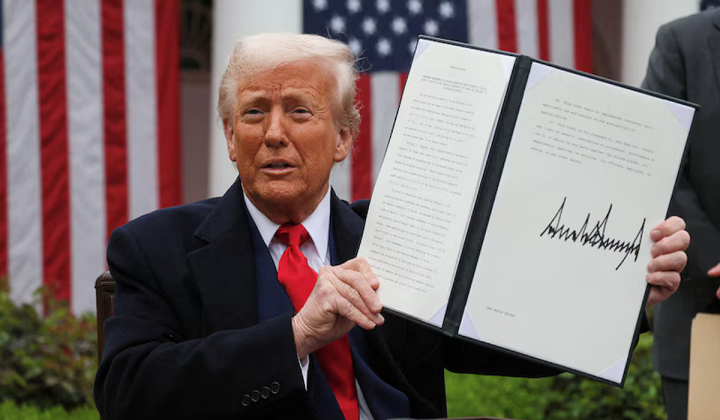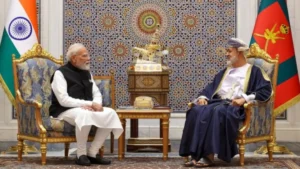US President Donald Trump’s proposed “reciprocal tariff” policy has once again made headlines. Under this proposed tariff structure, a 26% adjusted reciprocal tariff would be imposed on Indian exports to the United States, significantly increasing the cost of Indian goods in the American market. According to recent estimates, this would be over and above the existing average tariffs, potentially impacting India’s export performance in its largest overseas market.
Understanding the Concept of Reciprocal Tariffs
A reciprocal tariff policy is based on the idea that the United States should impose the same tariffs on other countries as they impose on American goods. This move, positioned as a way to “correct” what Trump deems unfair trade practices, would mean a massive increase in duties on Indian goods, which currently enjoy relatively low average tariffs in the US.
- According to a Barclays research report, India faces an average tariff of 2.7% on its exports to the US.
- In contrast, US goods face a 10.5% tariff when exported to India.
- With the new 27% adjusted reciprocal tariff, Indian products could become far more expensive and less competitive in the US market.
Impact on India’s Export Economy
1. Loss of Competitive Edge in the US Market
The United States is India’s largest export destination, and the two countries enjoy a substantial trade surplus in India’s favor. Indian goods, especially from labor-intensive sectors like textiles, pharmaceuticals, chemicals, and engineering, dominate key segments of US imports. A sudden increase in tariffs could lead to:
- Price hikes for Indian goods
- Reduced competitiveness in the US market
- Potential loss of market share to rival exporters
However, it’s crucial to note that the Trump administration is not singling out India. These tariffs apply to all major trading partners, which means that the net change in India’s relative advantage will depend on how other countries are impacted.
2. Sector-wise Effects Could Vary
An analysis by Ernst and Young (EY) highlights that the impact of these tariffs will not be uniform across sectors:
- Energy exports (like petroleum products) might face headwinds
- Textile and apparel exports could see some benefits, depending on how other Asian exporters are affected
- Pharmaceutical exports are likely to remain unaffected, given their critical nature and low price elasticity
This suggests a need for sector-specific strategies and adaptive trade diplomacy to minimize the fallout.
India’s Response: Strategic Caution
So far, India has not announced any retaliatory measures. The Indian government’s stance appears to be one of strategic patience, with an eye on maintaining stable bilateral ties and continuing trade negotiations with the US.
The response is likely influenced by:
- The February visit of Prime Minister Narendra Modi to the US, during which both sides agreed to strengthen economic ties
- A desire to avoid escalation and instead focus on a comprehensive trade agreement
- Ongoing negotiations that could lead to mutual concessions, possibly including lower Indian tariffs on certain US goods
Other Factors Influencing Export Prospects
Besides tariffs, several macro-economic and currency-related factors will play a role in shaping India’s export outlook:
- The health of the US economy post-tariff imposition
- The strength of the US dollar against the Indian rupee
- Global commodity prices and shifting supply chains due to geopolitical realignments
A stronger dollar or weakening rupee could make Indian exports more price-competitive, somewhat cushioning the tariff shock.
Potential Costs of Amicable Resolution
Even if India manages to negotiate a settlement, it will likely come with economic costs, such as:
- Reducing import duties on US products (which may be more expensive than alternatives from other countries)
- Making commitments to purchase a fixed quantity of US goods (like defense equipment or agricultural commodities)
These steps could distort India’s existing trade relationships and raise import bills, thereby offsetting some of the gains from export-led growth.
Summary of the Issue in Tabular Format
| Aspect | Details |
|---|---|
| Why in News | Trump proposes 26% reciprocal tariff on Indian goods exported to the US |
| Current Avg. Tariffs | India on US goods: 10.5%, US on Indian goods: 2.7% |
| New Proposed Tariff on India | 26% over and above existing 2.7% |
| Impact on Trade | Higher prices for Indian goods in US, potential loss of market share |
| India’s Trade Surplus with US | Plays a major role in cushioning overall trade deficit |
| Sectoral Impact (EY analysis) | Energy: Negative, Textiles: Some gains, Pharma: Neutral |
| India’s Response | Cautious, no retaliation yet, hopes for trade negotiations |
| Other Factors | US economic health, rupee-dollar exchange rate, global trade flows |
| Possible Concessions | Lowering tariffs on US goods, committing to buy American exports |



 Brazil Hands Over BRICS Presidency to In...
Brazil Hands Over BRICS Presidency to In...
 India–Oman CEPA Signed to Boost Trade an...
India–Oman CEPA Signed to Boost Trade an...
 India and Saudi Arabia Sign Visa Waiver ...
India and Saudi Arabia Sign Visa Waiver ...







